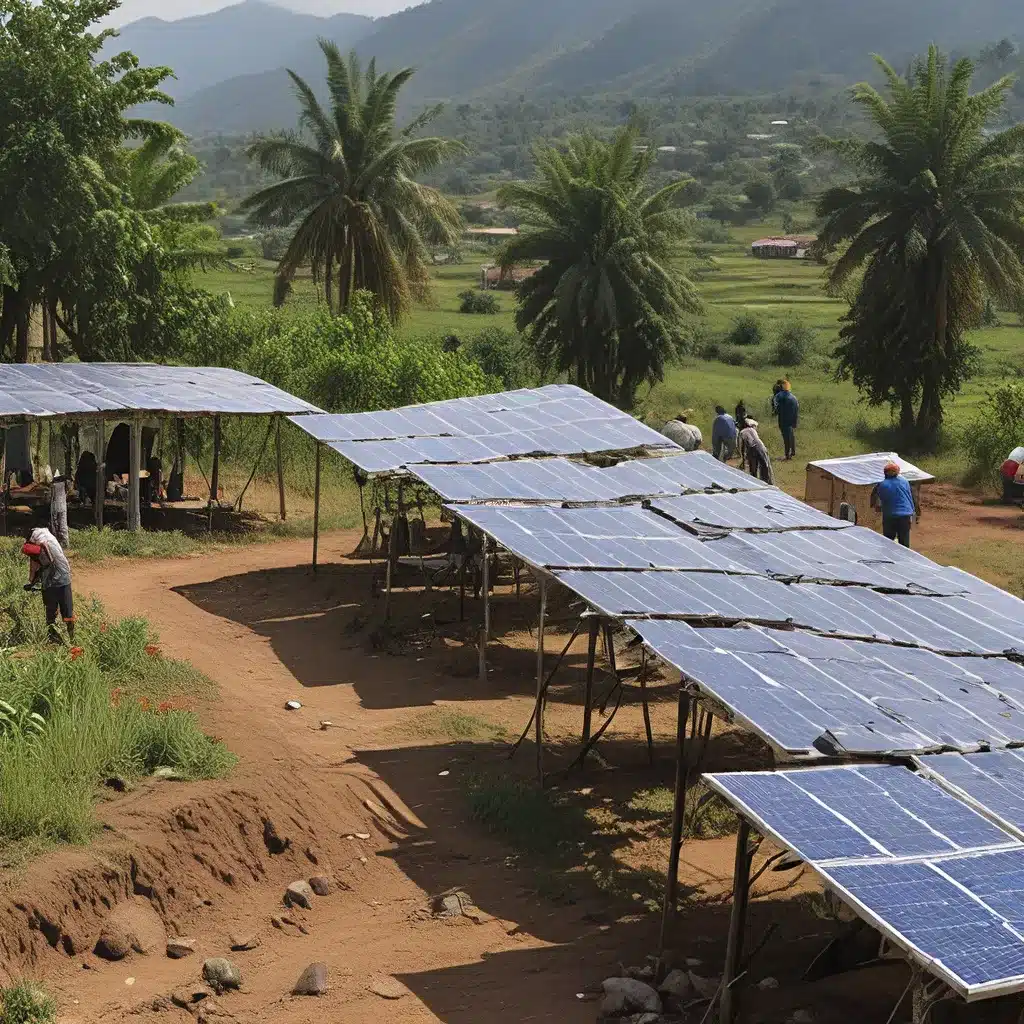
As someone who has experienced the devastating impact of natural disasters firsthand, I can tell you that when disaster strikes, having reliable, renewable energy sources can make all the difference. And that’s precisely why I’m so passionate about the role of renewable energy in disaster relief and community resilience.
Let me take you on a journey through the remarkable ways renewable energy is transforming disaster response and long-term recovery efforts, particularly in places like Puerto Rico, which has faced the brunt of catastrophic hurricanes in recent years.
Renewable Energy to the Rescue
When disaster strikes, access to reliable power is often the difference between life and death. Traditional fossil fuel-based power systems can be highly vulnerable to the destructive forces of hurricanes, floods, and other extreme weather events. However, renewable energy technologies like solar, wind, and battery storage have proven to be remarkably resilient in the face of these challenges.
FEMA’s guide on connecting mitigation to electric power highlights how renewable energy solutions can help maintain critical infrastructure and services during and after disasters. Solar panels, for instance, can continue generating electricity even when the grid is down, providing a much-needed lifeline to communities in crisis.
And it’s not just about the immediate response – renewable energy is also playing a crucial role in long-term recovery and resilience-building efforts. Take the case of Puerto Rico, where the Hispanic Federation’s Amanece Road to Recovery fund has been investing millions in renewable energy projects to help communities rebuild and become more self-sufficient.
Empowering Local Communities
One of the most remarkable aspects of renewable energy in disaster relief is how it empowers local communities to take charge of their own resilience. Rather than relying on centralized, fragile power systems, renewable energy solutions can be deployed at the community level, giving people a sense of control and agency in the face of disaster.
This is exactly what the Hispanic Federation has been doing in Puerto Rico through its Amanece fund. By providing grants to community-based organizations, they’ve been able to support the installation of rooftop solar projects, sustainable agriculture initiatives, and other innovative programs that are transforming the way Puerto Ricans prepare for and respond to natural disasters.
It’s a remarkable thing to see how these local organizations are using renewable energy to address not just the immediate needs of their communities, but also the long-term challenges of climate change and economic development. By investing in renewable energy, they’re not just powering their homes and businesses – they’re building a foundation for a more resilient, self-sufficient future.
Renewable Energy and Equity
Another critical aspect of renewable energy in disaster relief is its potential to address issues of equity and social justice. Natural disasters often disproportionately impact marginalized and underserved communities, exacerbating existing disparities in access to resources and support.
But renewable energy can be a great equalizer. By making it more accessible and affordable, we can ensure that even the most vulnerable communities have the tools they need to weather the storm and bounce back stronger than ever. And that’s exactly what the Hispanic Federation is doing in Puerto Rico, with a focus on equitable community development and supporting the island’s long-term vision for recovery, resilience, and change.
The Road Ahead
As we look to the future, the role of renewable energy in disaster relief and community resilience is only going to become more critical. With the increasing frequency and intensity of extreme weather events due to climate change, it’s clear that we need to rethink the way we approach disaster preparedness and response.
And that’s where renewable energy comes in. By investing in these innovative technologies, we can build a more robust, resilient infrastructure that can withstand the challenges of the 21st century. It’s not just about powering our homes and businesses – it’s about creating a more sustainable, equitable, and secure future for all.
So, what can you do to support this important work? Well, one thing you can do is explore the renewable energy solutions offered by companies like Firewinder. By taking the time to understand the benefits of renewable energy and how it can transform disaster response, you can become a more informed advocate for this critical issue.
But more than that, I encourage you to stay informed, engaged, and ready to take action. Because when disaster strikes, the power of renewable energy can be the difference between a community that thrives and one that struggles to survive. It’s time to harness that power and build a more resilient, sustainable future for all.

